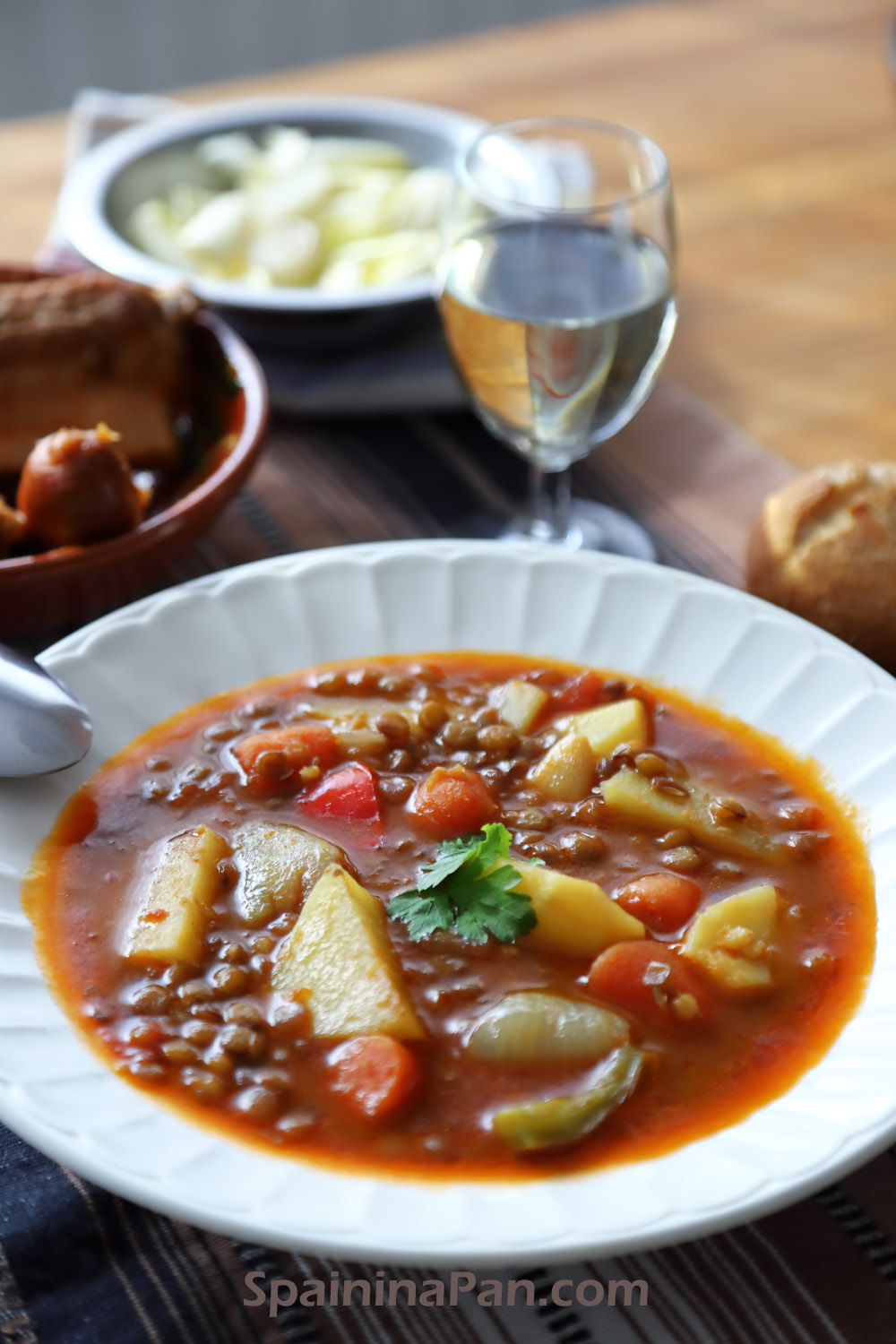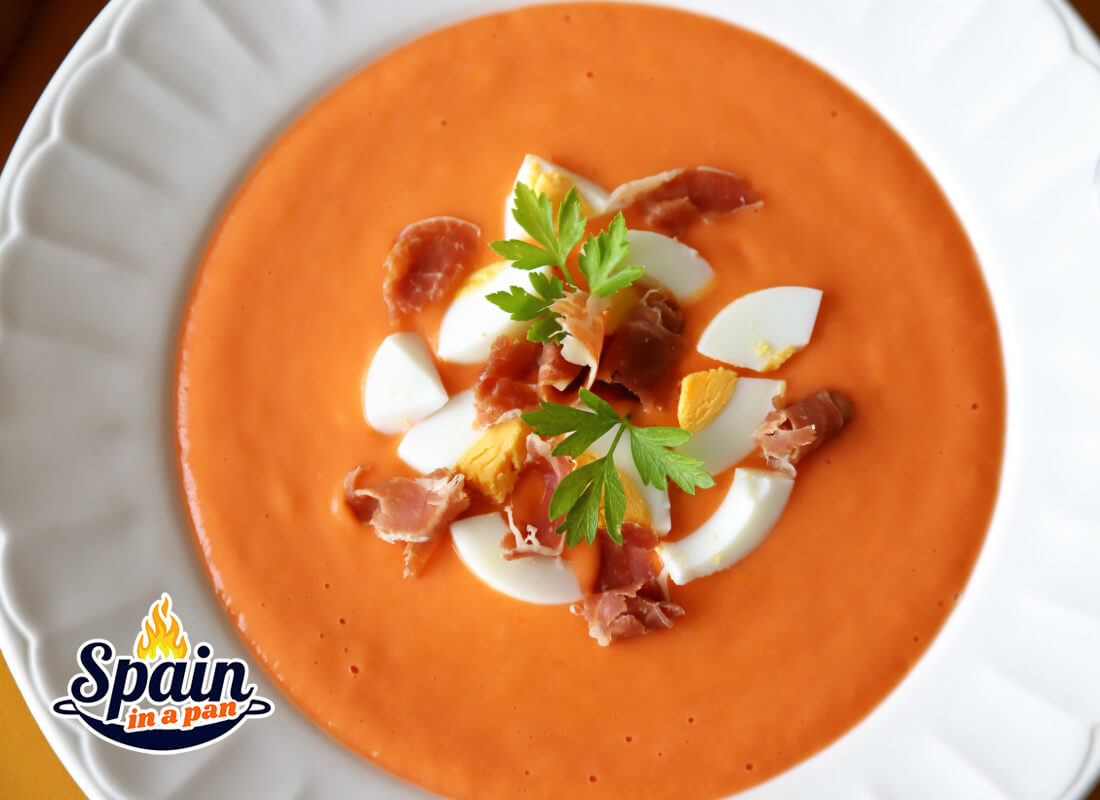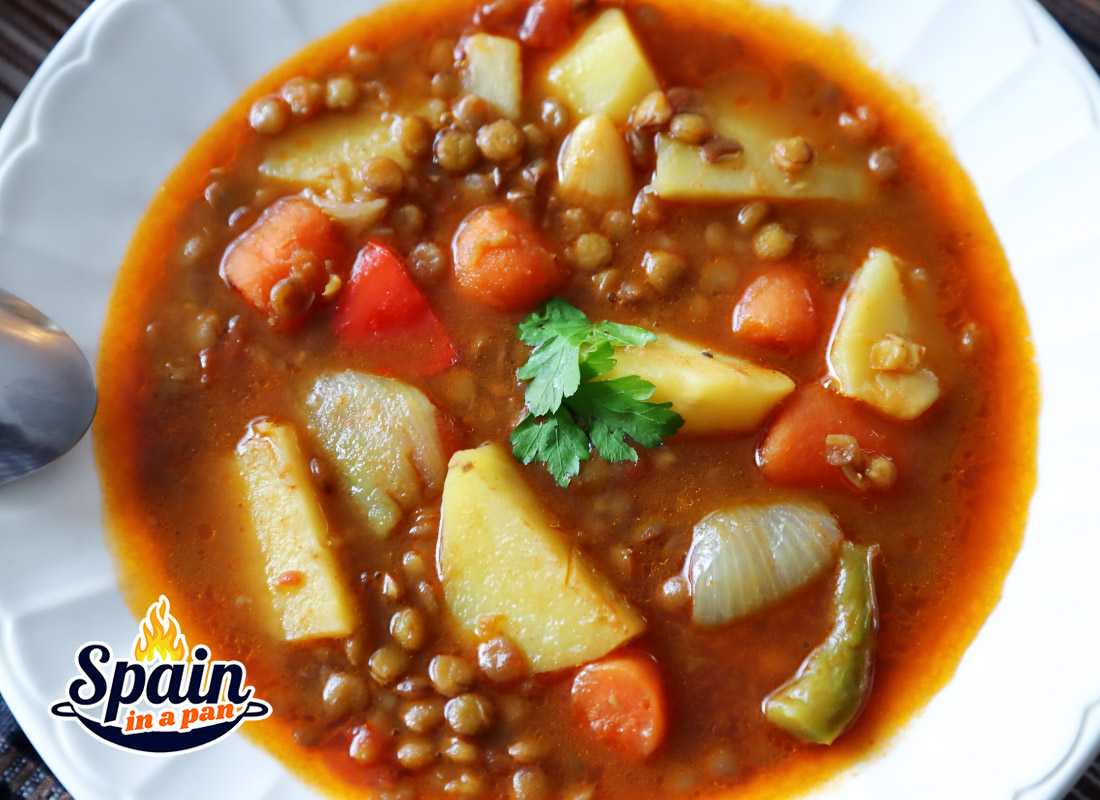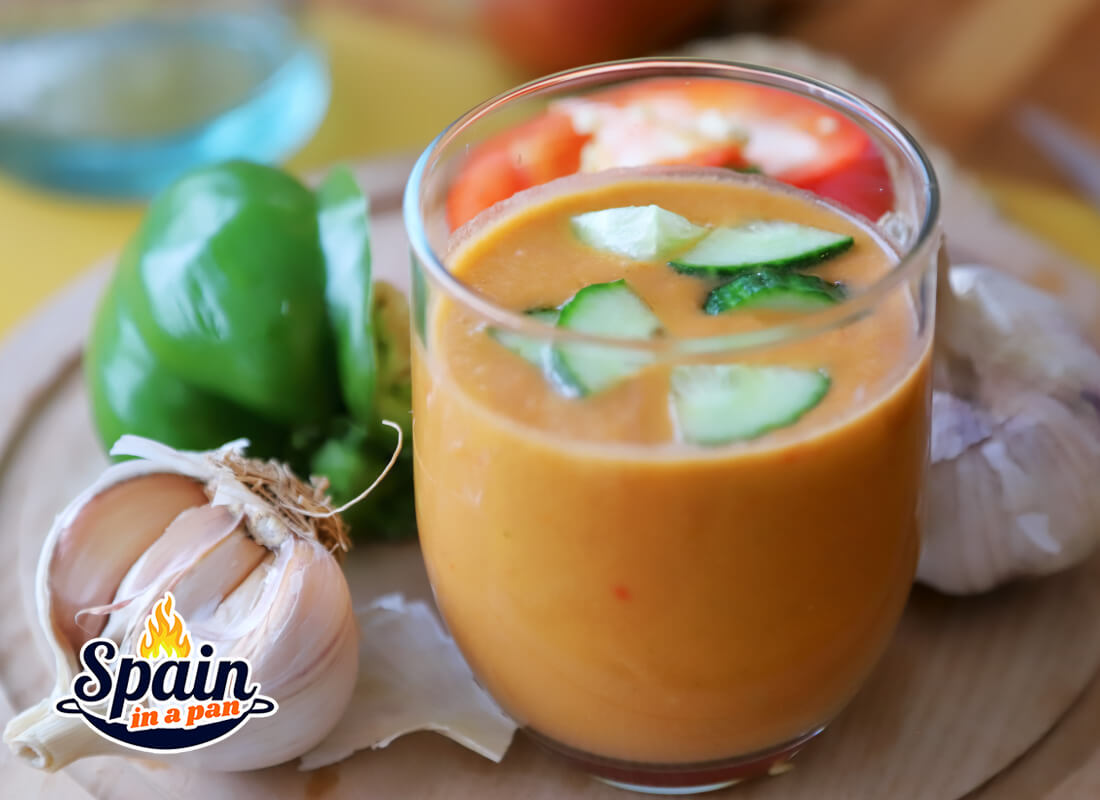- HOME
- Soups
Easy Spanish Soup Recipes
(Recetas de Sopa)
By Edu Valor / Author - Spanish Chef
There are Spanish soup recipes with a history rooted in either difficult times or regional traditions, dating back as far as Roman times. Back then, people made simple recipes using stale bread, olive oil, vinegar, and garlic—the forerunner of gazpacho.
Some of them are incredibly simple, while others are more elaborate, but none are overly complicated.
Collective struggles often led to the creation of minimalist dishes, whether due to war, famine, or economic depressions. During those times, they made do with what they had—soups served with bread.
These were often also the creations of the working class.
Are they Soups or Stews?
Some traditional soups resemble stews, blurring the line between the two. To outsiders, some of them are mistaken for soups and vice versa. Here in Belgium, people call them "heavy" soups.
Some don’t seem to have enough broth to be considered a soup, while others have too much to be called a stew.
In northern Spain, particularly in Galicia and Asturias, certain dishes are so broth-based that foreigners often see them as soups, and they're right!
With some recipes, people eat the broth first with bread, then enjoy the solid ingredients as a second course. Another common feature is one-pot cooking—meats, beans, and vegetables simmer together in a single pot with plenty of liquid.
So, you see, both terms can work. Keep it simple—if there's plenty of broth, you can call it a soup. If the liquid is reduced and thick, call it a stew or guiso.
What Story is Behind Popular Spanish Soup Recipes?
Its always interesting how certain recipes came to life or what made them known and/or popular. Some of the more common soups certainly have a fascinating backstory.
1. Gazpacho – The Soup of Field Workers
Gazpacho goes back to ancient Rome. Soldiers and peasants mixed stale bread with garlic, vinegar, and olive oil. In the 16th century when Moors introduced tomatoes and peppers, the soup became the refreshing gazpacho we know today. It became a staple for Andalusian field workers. Cooling and nutritious as it is, it became the go-to drink against the Spanish summerheat.
2. Sopa de Ajo – The Soldier’s Comfort
This simple garlic soup has roots in Castilla-Leon. A popular soup among Spanish soldiers in the 16th and 17th century. It was easy to prepare and cheap, thanks to its basic ingredients: garlic, stale bread, paprika, and water. When there was a meat restriction during Holy Week it was considered a restorative meal.
3. Fabada Asturiana – The Energizer of Asturias
Fabada Asturiana, the hearty bean stew, emerged as a winter dish for
farmers and coal miners north of Asturias. The high calory and protein content, was needed to endure the harsh climate and
physically demanding work. The dish gained popularity in Spain during the 19th
century. Any visitor to Asturias should try the fabada. Hikers and other adventurers will be glad they did.
4. Cocido Madrileño – The Soup of Class Struggles
The cocido chickpea stew, evolved from medieval Spanish olla podrida (literally "rotten pot"), a slow-cooked dish made with ingredients that were at hand. Initially a peasant dish, later becoming popular among Madrid's aristocracy. They refined it by adding better-quality meats. Nowadays it is served in three courses (vuelcos): first the broth with noodles, then the chickpeas and vegetables, and finally the meats.
5. Marmitako – The Fishermen’s Stew
While out at sea, Basque fishermen created a tuna and potato stew. The name comes from marmita, the metal pot they used to cook on their boats. The dish was designed to be simple yet hearty. They would use ingredients that could last for weeks. Today it's a staple of Basque cuisine.
6. Ajoblanco – The Gazpacho of the Poor
This lesser-known almond soup is sometimes called "white gazpacho." With its Moorish influence, it was popular among the poor who couldn’t afford tomatoes but had access to almonds, garlic, and stale bread. To make it more refreshing, people started serving it with grapes or melon.
7. Zarzuela de Mariscos – A Symphony of Seafood
The name zarzuela comes from the Madrilenian word for a type of musical theater, hinting at the dish’s lavish mix of seafoods. It was originally a dish for fishermen but later became a delicacy in Catalonia. Today it is associated with grand feasts and celebrations.
Pick One to your Heart's Delight
Defining a Spanish soup is nearly impossible. Naturally, you’d think of Mediterranean ingredients, but there’s more to it.
Even a master chef would struggle to pinpoint what makes Spanish soups truly typical because of their incredible variety.
They come in all kinds of textures, consistencies, ingredients, and temperatures, changing with the season and region. Take gazpacho, for example—an ice-cold soup you can drink straight from a glass. I have mine with a few pieces of cucumber, just how I like it!
And there are even more of those refreshing summer soups!
Some unusual ones, like strawberry or orange soup, made me hesitate at first—but only for a moment. They’re absolutely worth trying. I’m sure you’d find something to your heart’s delight, too.
Then there are stew-like ones but not quite, like the lentil soup above. Hearty and delicious—I always go back for seconds.
Want Something Easy and Nutritious?
Most Spanish soup recipes are pretty easy to make, and they’re usually a one-pot dish—fewer dishes to wash! Sometimes, I play it smart when I want something light for lunch.
I just pick one of the heartier soups and have it with some bread. If I don’t feel like cooking much, a thick soup will keep me full.
That’s how we grew up. Sometimes, we had soup as the main meal, and occasionally, we’d crack eggs into it to cook.
Plenty of nutrients, if you ask me!








